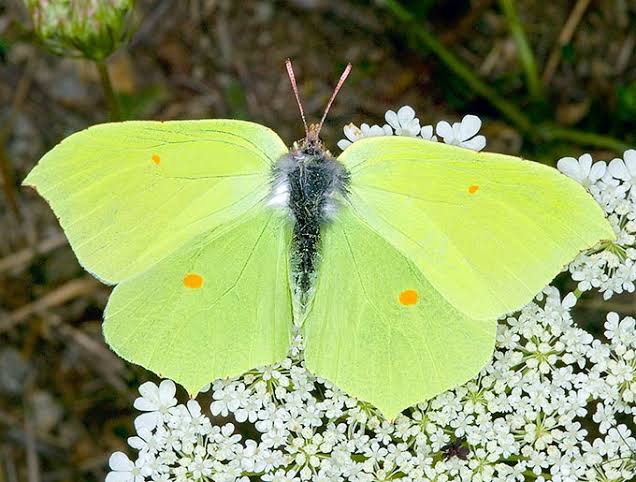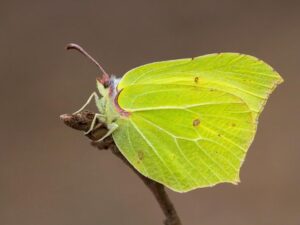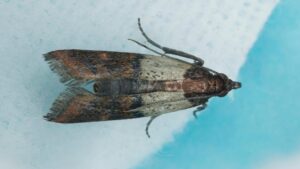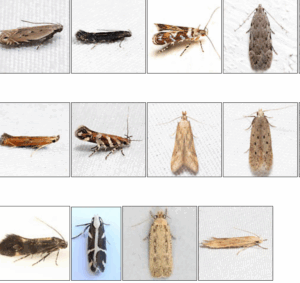Common Brimstone Butterfly: Habitat, Diet, and Life Cycle Explained:In recent years, the Brimstone butterfly has notably expanded its range, particularly in northern England. When roosting amidst the foliage, its angular wing shape and pronounced veining make it remarkably resemble a leaf.
It is widely believed that the name ‘butterfly’ is derived from the yellow hue of the male Brimstone. While males sport vibrant yellow-green upperwings and yellow-green underwings, females exhibit pale green, almost white wings.
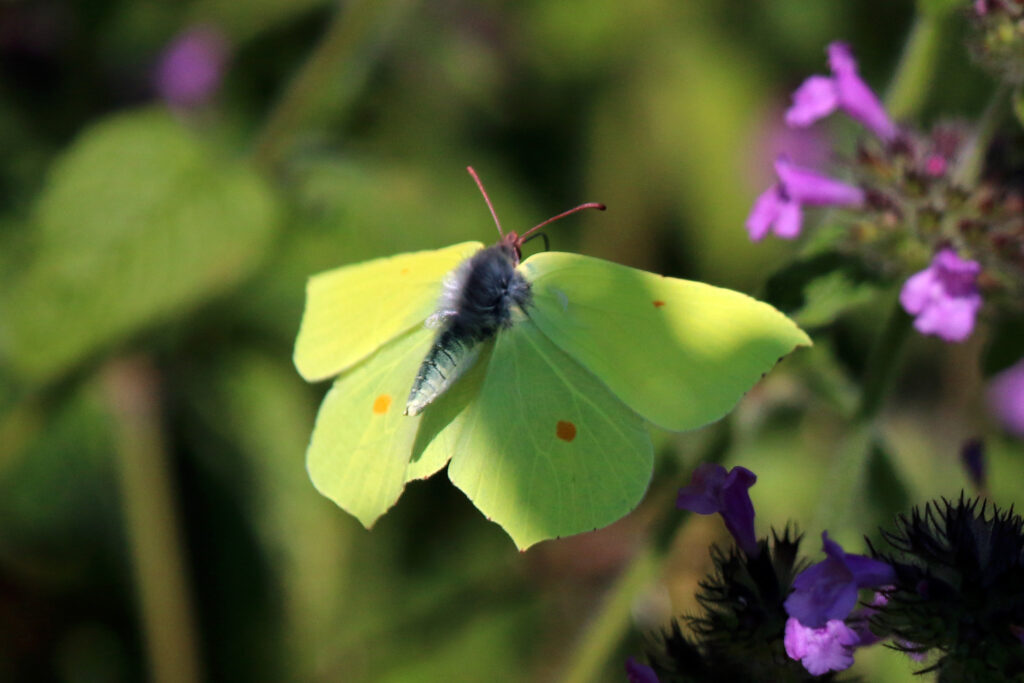
Size and Family
- Family: Whites and Yellows
- Size: Large
- Wingspan (male to female): 60 mm
Conservation Status
- GB Red List (2022): Least Concern
- Butterfly Conservation Priority: Low
- European Status: Not threatened
- Fully protected under the Northern Ireland 1985 Wildlife Order
Caterpillar Food Plants
The larvae feed on the leaves of Buckthorn (Rhamnus cathartica), which thrives on calcareous soils, and Alder Buckthorn (Frangula alnus), typically found in moist, acidic soils and wetlands.
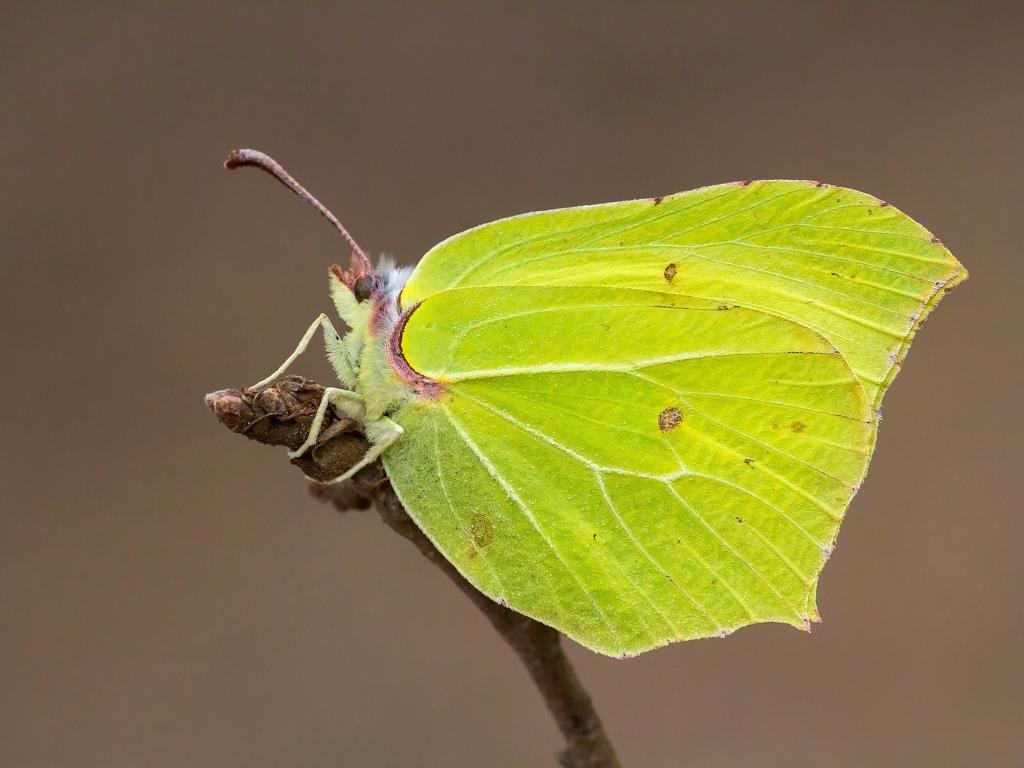
Habitat
Brimstone butterflies inhabit scrubby grasslands and woodlands. They are highly mobile and can frequently be spotted fluttering along roadside verges and hedgerows.
Distribution
- Countries: England, Scotland, Wales, and Ireland
- Abundant in England and Wales, rare in Scotland, and infrequent in Ireland
- Abundance trend: +22% (1976-2019)
- Distribution trend: -3% (1976-2019)
It is commonly believed that the term “butterfly” stems from “butter-coloured fly,” a nod to the yellow coloration of the male Brimstone butterfly, while the female is much paler with a whitish-green tint. The Brimstone boasts a strikingly elegant wing shape, which, when roosting or hibernating, perfectly mimics the appearance of a leaf. This butterfly is among the few species that hibernates in its adult form, spending the majority of its life in this stage. Its distribution is closely tied to the availability of its larval food plants. In England, represented by the subspecies rhamni, the Brimstone is typically found south of a line stretching from Cheshire in the west to South-east Yorkshire in the east, though occasional vagrants may appear in other regions. In Ireland, represented by the subspecies gravesi, it is most commonly found in a small area between West Galway, West Mayo, and East Mayo, with a band running through central Ireland from Clare in the west to Kildare in the east.
What Do Brimstone Butterflies Look Like?
- Adults: These are medium-large butterflies with veined, leaf-shaped wings. Females have very pale, almost white, yellow-green wings, while males display brighter yellow-green wings. Both sexes feature a small orange spot on each wing.
- Wingspan: Up to 6 cm.
- Caterpillars: The larvae are green and remarkably well-camouflaged, blending seamlessly with the leaves of their food plants. They are often found resting along the margins of leaves.
What Do Brimstone Butterflies Eat?
- Adults: They feed on nectar, utilizing their long proboscis to extract nectar from flowers such as teasel, which are out of reach for many other butterflies. They show a preference for purple flowers, with bluebells serving as an important early source of nectar.
- Caterpillars: The larvae consume the leaves of Buckthorn and Alder Buckthorn.
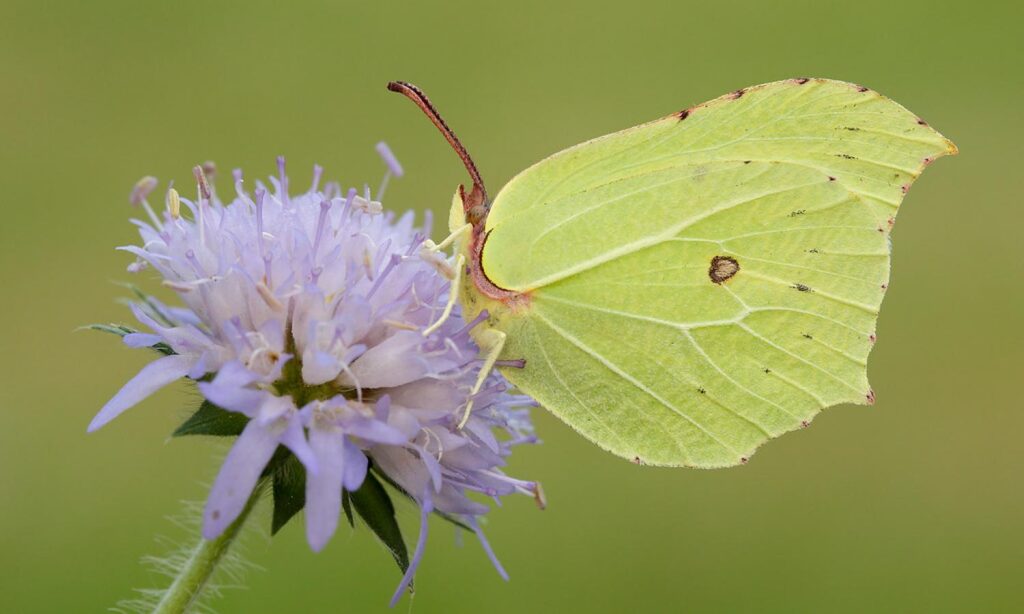
How Do Brimstone Butterflies Breed?
The Brimstone butterfly is notably long-lived compared to other species, with adults capable of surviving up to a year. Mating occurs in the spring, when fertilized eggs are laid on the underside of Buckthorn leaves. Once hatched, the caterpillars undergo several developmental stages (instars) before pupating during the summer. The newly emerged adults feed until early autumn, at which point they enter a period of hibernation. They remain inactive until spring, when they emerge to mate once again.
Where Do Brimstone Butterflies Live?
Over the years, Brimstone butterflies have become increasingly common, now found throughout much of England and Wales. They are often seen in gardens and woodlands, particularly early in the year before other butterflies have emerged.
Signs and Spotting Tips
The Brimstone is often heralded as one of the first butterflies of the year, as adults hibernate over winter in woodlands and emerge on warm spring days. Newly emerged adults are seen from July and can live up to a year. To spot them, look for them fluttering through gardens and along woodland rides or spiraling skyward with their mates, before tumbling down into bushes to mate.
The Brimstone butterfly is easily distinguished from its close relatives, particularly when viewed from above. Unlike other members of the Sulphur group, it lacks a dark border on its wings, and in Finland, there are no other species with which it could be confused. Its sharp wing tips, yellow or greenish-white coloration, and reddish central blotches lend the Brimstone a distinctive appearance. When at rest, it always folds its wings together, making it difficult to examine the upper surface without first capturing the butterfly.
The Brimstone is among the first butterflies to emerge in spring. Males become active several weeks before females, often appearing as early as March, as they search for mates. Females typically begin flying in May, and after mating, they lay their conical eggs singly or in small clusters on the leaves and buds of buckthorn plants, or occasionally on other buds in the absence of leaves. The caterpillars, which blend seamlessly with the foliage, are not easily spotted. They also construct their cocoons among the buckthorn branches.
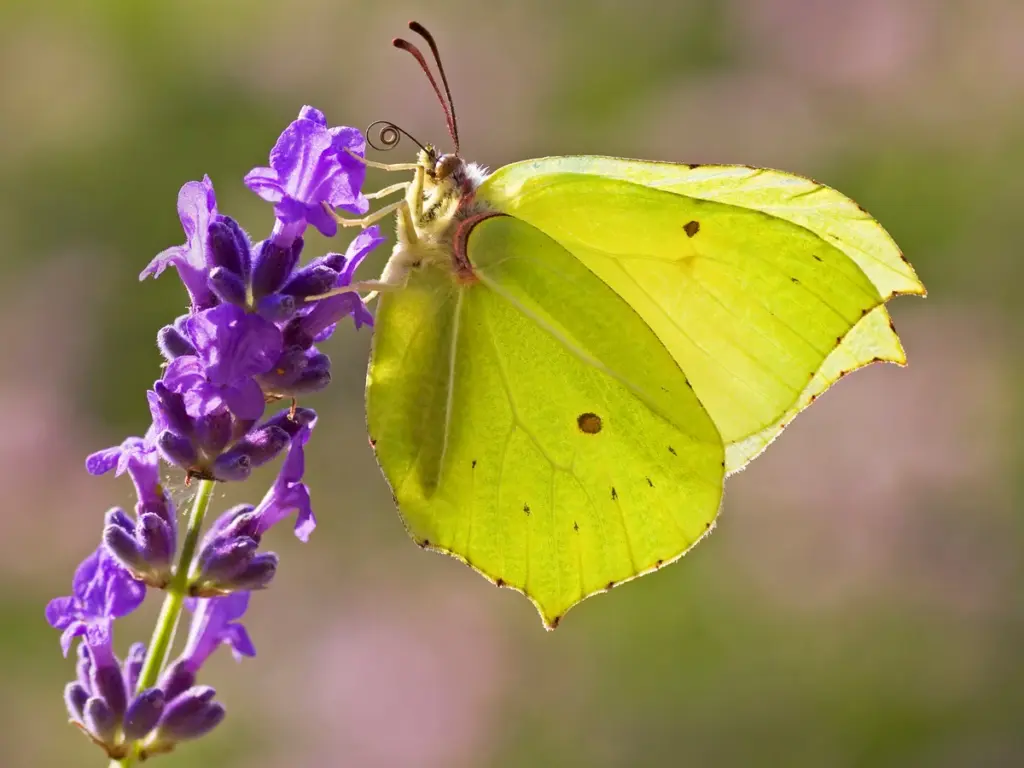
The Brimstone is found throughout the southern half of Finland, extending as far north as Oulu and Kajaani. It is one of the longest-lived butterflies in the region, often surviving for up to a year. This lifespan includes not only the adult stage but also the lengthy caterpillar and cocoon periods, with many caterpillars living for two seasons—longer than most other butterflies.
Geographical Distribution
The Common Brimstone can be observed across Europe, as well as in North Africa and parts of Asia.
Appearance
Males are bright yellow, while females display a paler yellow with a subtle greenish hue. Both sexes bear an orange spot on each wing. When resting, the Brimstone always keeps its wings closed, revealing a pale yellowish-green underside that serves as effective camouflage among the surrounding vegetation.
Life Cycle
With a lifespan of up to 13 months, the Common Brimstone is one of the longest-living butterflies. It hibernates as an adult, entering a dormant state as early as August. In late summer, it feeds on nectar to build energy reserves for the winter.

